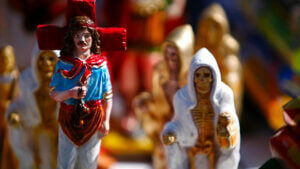
When most of us think of Swedish ancient history and burial traditions, the Vikings come immediately to mind. And rightfully so! For hundreds of years the Scandinavian peninsula, half of it being Sweden, was home to these fearless fighters. However, there are many other hidden gems too, when it comes to funeral practices. With this post we learn more about the Scandinavian Sami people. Specifically we’ll be focusing on their Shamanic death practices. Finally, you can expect a brief discussion on Lutheranism and modern Swedish burial customs.
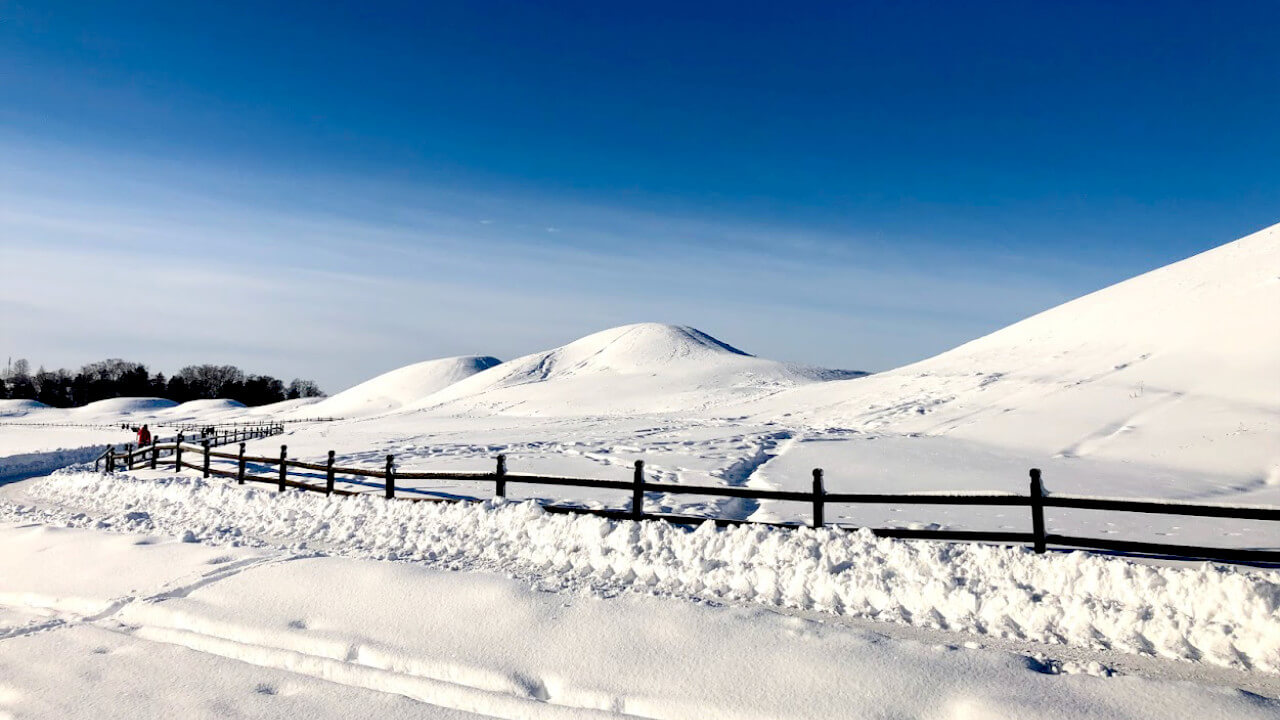
Most of the residents of the Scandinavian peninsula were indeed the Vikings until the 11th century, adhering to the Nordic Paganism. This includes modern-day Sweden too! The Vikings left behind burial mounds also called tumuli, such as the Håga mound in Uppsala.
The Vikings are not, though, the only peoples that have lived in Scandinavia for hundreds of years!
The Sámi people (written also Sami or Saami), are originally a Finno-Ugric group. Additionally, they have inhibited t he Northern regions of Norway, Sweden as well as Finland and part of Northwestern Russia since at least 3000 BC.
Furthermore, the Sámi have been divided in many subgroups being influenced by the countries they have settled in. However, it is safe to say that until the 18th century most were still practicing Shamanism. Specifically, they were following a polytheist faith with many elements of animism. Moreover, the Sámi believed that natural objects, such as stones, as well as animals, possess a soul. Therefore they respected and worshiped them. That means not only that there were many animal spirits that were worshiped, but also that the dead held particular importance for the Sámi.
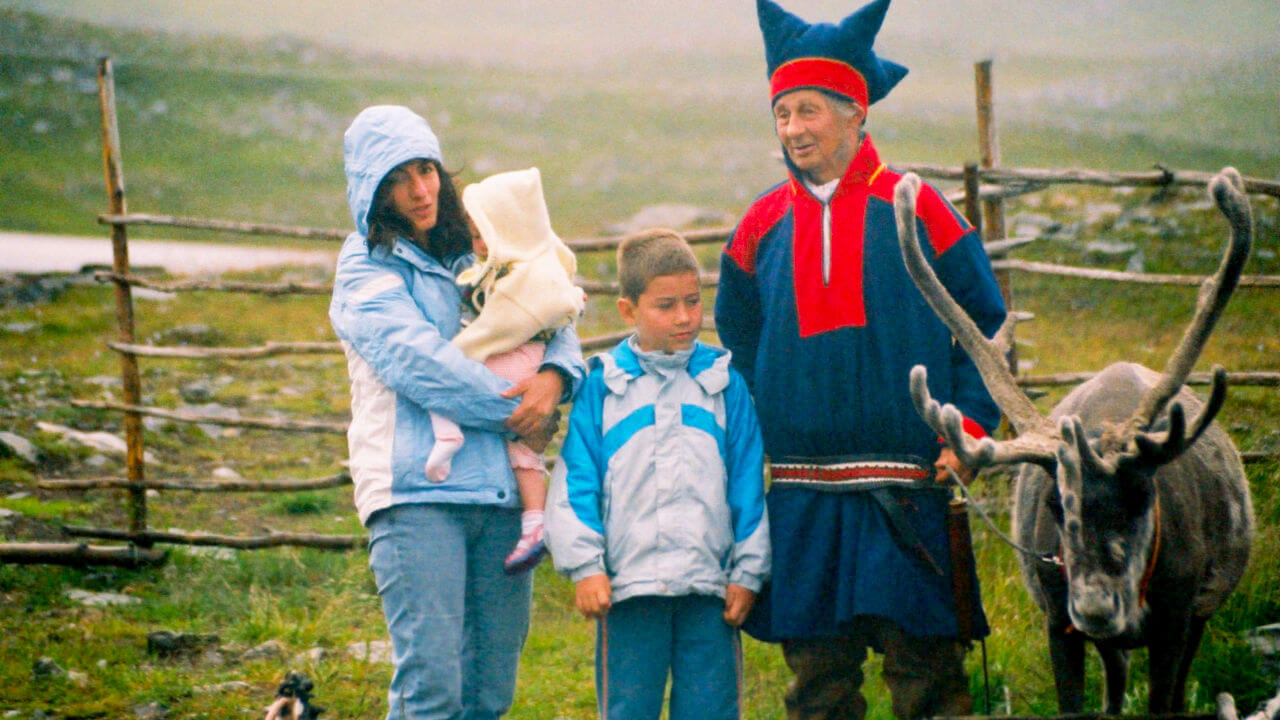
The Sámi veneration of the dead – especially the respect for their dead ancestors – was present at their burial rites and perceptions of death. They considered the dead and the living to be interconnected and in communion with each other. Communication with ancestral spirits was usually performed by the Noaidi , the shaman of the community. Noaidis were also in charge of healing and protecting, using their traditional drum.
Additionally, the Noadi were believed to possess the ability to leave their corporeal body and roam the spirit world where they could ask the spirits of the dead for help and advice. For instance, they may have tried to know what kind of sacrifice was needed precisely. Or how could they resolve any given problem of the community. In that respect, the Sámi remained very much in touch with their deceased.
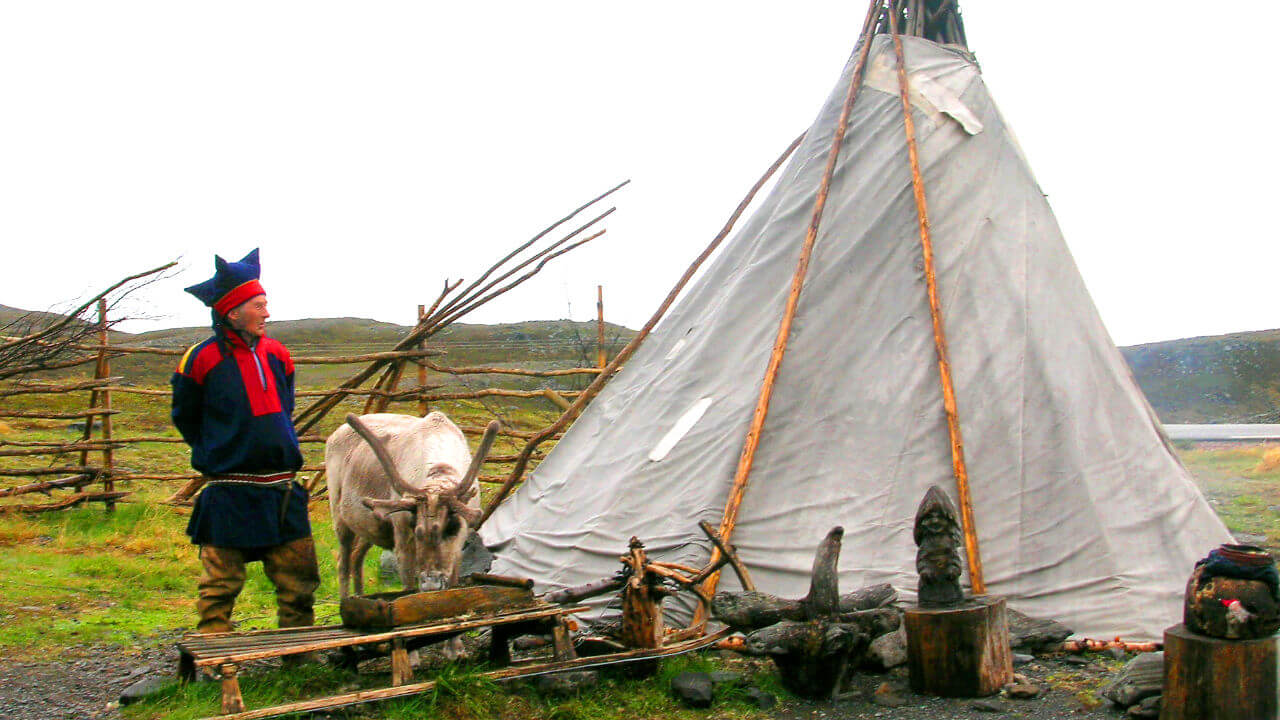
The rocky, frozen regions of Sápmi, the cultural land of the Sámi that expands on the Northern Scandinavian peninsula, has often made it challenging for them to bury their dead. Either due to the mountainous terrains or the many inches of frozen snow during the winter months, burials were complicated. Because of that the Sámi were not always able to bury their loved ones in the ground. Therefore, they would use temporal burials either in hollow tree trunks or in scree graves. The latter refers to graves that cover the body with stones instead of the usual earth burial.
Moreover, once spring came the Sami would then buried their dead in the appropriate location, since burials were easier. These graves were usually quite shallow so that the spirit of the dead can leave the body behind with ease. That logic applied also to the scree graves mentioned above.
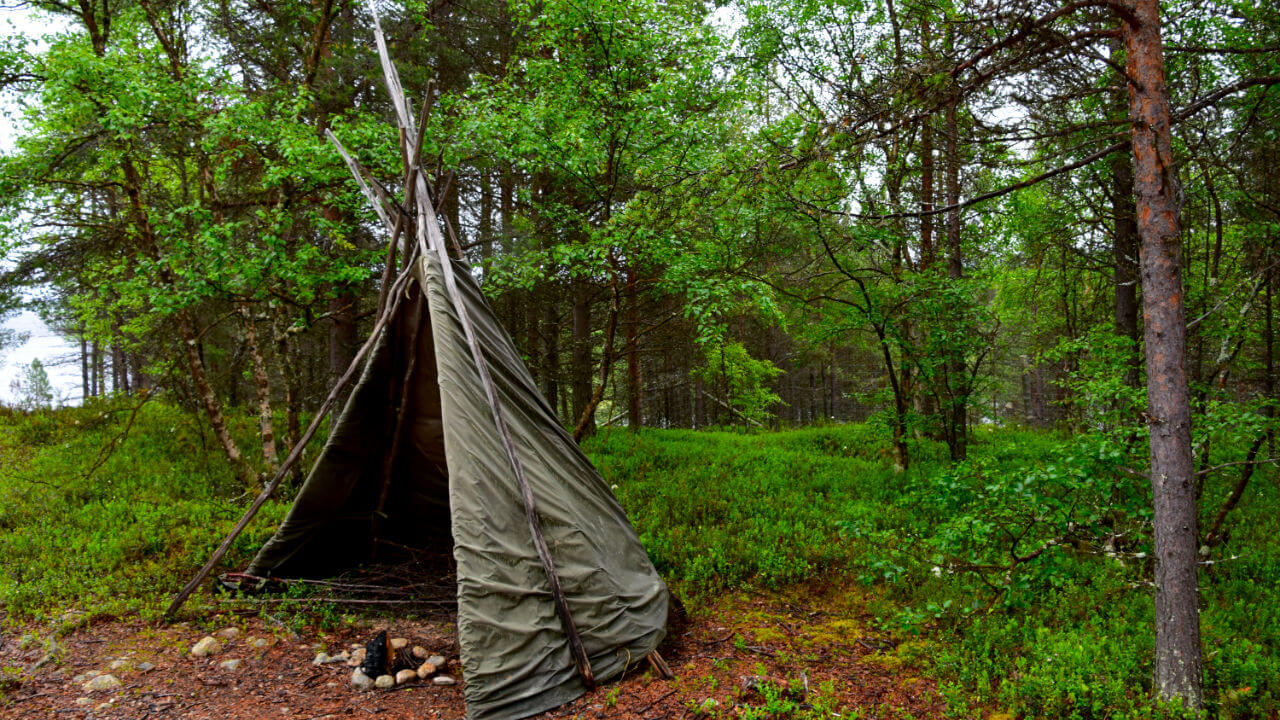
"Due to the climate and the terrain, the dead were often buried only temporarily."
Although ancestors were very important for the Sámi, the location of the graves was away from settlements. Instead, they chose places (such as large boulders) charged with spiritual energy, also known as sieidi since this is where the spirits would meet. Sacrifices of animals for the spirits of the dead also took place at sieidi. These normally included elks, reindeers or bears. Before the dead were buried close to these spiritually significant locations, they were also engulfed in birch bark.
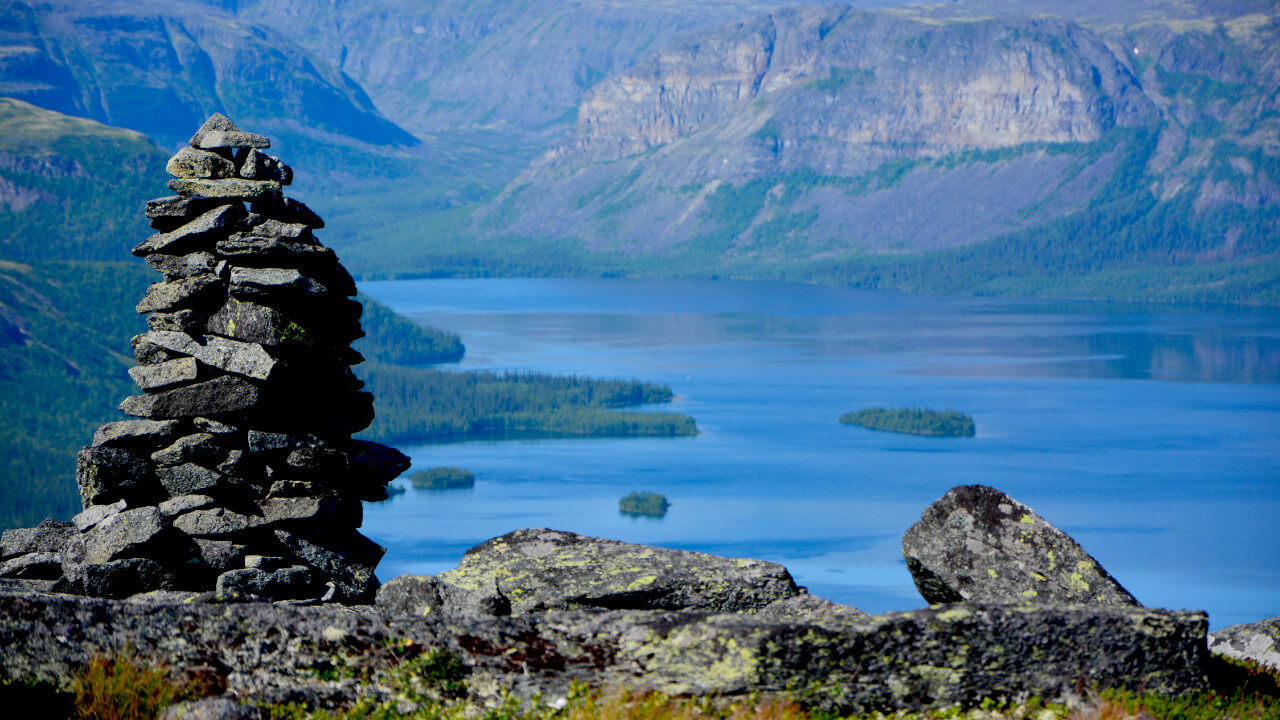
Scandinavian Christians have persecuted the Sámi throughout the centuries. The reason for that is because they saw their Shamanic belief system as magic. Furthermore, in early modern Swedish history, no other religion was allowed except for Christianity. Therefore, the vast majority of Sámi had to eventually convert to Christianity. However, evidence shows that, at least in the beginning, the bodies of the dead were still wrapped in birch bark.
Modern Sweden, officially the Kingdom of Sweden, is secular with most people identifying as irreligious. However, Protestants, specifically Lutherans, consist the majority of the religious population.
A custom of Lutheran funerals was the sugar candies shared during the funeral. Additionally, they Swedes used many flowers. While the latter is still important, the former has been abandoned since the end of the 19th century. In more recent years there had also been a sharp rise of burials taking place with no funeral rites whatsoever: a staggering rise from 2% to 8% in 2019!
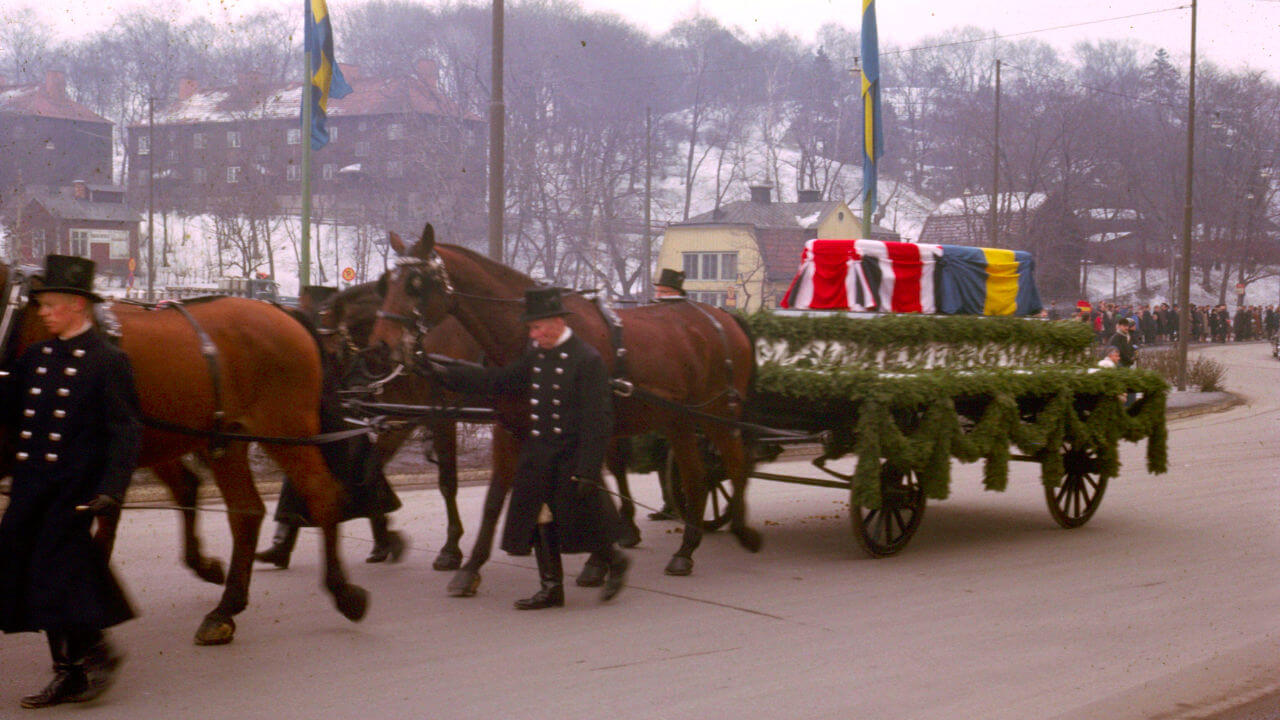
Perhaps, the most particular custom related to modern Swedish funerals, is not necessarily how the funeral takes place, but when. In most places, the burial time varies between 24 hours to a week but the Swedes go much further than that. Until recently, Swedish law allowed for members of the family to wait up until two months after the death of their relative, before they had to bury them.
This changed with a 2015 law which reduced that to one month. This remains though multiple times more than the European average period between death and funeral. Moreover, the average time between death and funeral in Sweden is now around 20 days. Before the 2015 law mentioned above passed, that was even higher. This, interestingly enough, resulted in Sweden having very large morgue facilities.
But there’s another interesting comparison would can draw here. And that’s between modern Swedish funerals and Sámi shamanic death practices. This specifically refers to the delay of funerals for the former and the temporary burials of the latter.

There are some theories as to why Swedes wait so much before they bury their dead: it could a practical matter since many churches are available only a couple of days per week for funerals. After all in some areas, like Stockholm, almost no funerals take place during the weekend. That means that Fridays tend to become popular choices for too many people! Therefore some need to wait until the following week.
Another reason could be that it is believed that Swedes tend to grieve first and then after the initial shock of loss, attend a funeral. Others support that the Swedish can be quite afraid of death. Because of that they are following an “out of sight, out of mind” approach for their funerals.
Although this waiting period is a fascinating practice, there is no commonly accepted reason for its existence.
We hope you learned something new about this country’s death practices!
For more details regarding the Viking past of Sweden, read this article! There we bust popular myths regarding Viking burial rites while exploring their rich history! If you would like to read more about Arctic death practices, we recommend our Greenland.
The average mixed death rate in Sweden is 9,1 per 1.000 people (2018).
According to Swedish law, the dead have to be buried within one month after death.
Just like most other Nordic and Scandinavian countries, the majority of Swedish believers are Lutherans. However, a large part of the Swedish population is irreligious. Finally, Sweden is a secular state.
The rate of utilized organs in Sweden is 18,51 per million people (2019).